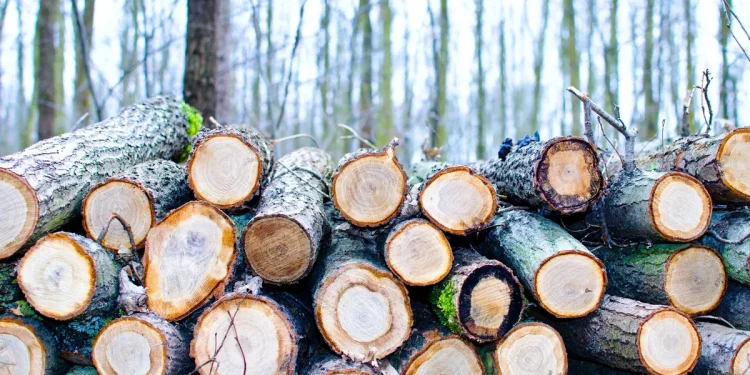The irony of the world is that almost every ‘save the forests’ meeting and conference happens inside a well-furnished room that is decorated with furniture made by cutting trees. The market for wood-derived products stood at $631 billion in 2021, and despite all the efforts that environmentalists have been putting in to prevent deforestation activities, it is expected to cross the mark of $900 billion by 2026. So have we already lost the fight to save our forests?
Well, not yet because there is a new solution that promises an end to our need of cutting trees. A team of researchers at MIT claims that lab-grown timber can replace deforestation driving products made from real wood. They have developed a technique using which timber can be produced in any shape and size, so for example, if you need a new wooden chair, using the researcher’s technique, you can create it in a lab without cutting a single tree.
How did the researchers create wood in a lab?
The researchers at MIT performed an experiment that gave stem cell-like properties to normal plant cells. They extracted cells from the leaves of a flowering plant called Common zinnia (Zinnia elegans) and then stored the same in a liquid medium for a couple of days. In the next step, the researchers treated the plant cells with a gel-based medium enriched with nutrients and hormones.
After some time, the cells gave rise to new plant cells. The researchers also noticed that by changing the hormonal concentration in the gel medium, they could control the physical and mechanical properties of the newly grown cells. During the experiments, plant material that contained high hormone concentrations turned stiff.
“In the human body, you have hormones that determine how your cells develop and how certain traits emerge. In the same way, by changing the hormone concentrations in the nutrient broth, the plant cells respond differently. Just by manipulating these tiny chemical quantities, we can elicit pretty dramatic changes in terms of the physical outcomes,” lead researcher Ashley Beckwith said, explaining the role of hormones in plant cell growth.
Moreover, Beckwith and her team were also able to 3D print custom-designed structures out of the cells cultured in the gel using a 3D bioprinting method. For three months, the lab-printed plant material was incubated in the dark, and the results were shocking. Not only did the lab wood manage to survive, but also grow at a rate twice that of a regular tree.
Growing furniture in the lab is also waste-free
An estimate suggests that the current furniture-making process leads to the loss of about 30% of the total wood as waste. Interestingly, the 3D bioprinting technique suggested by the researchers at MIT does not generate any waste and can be employed to produce plant material of any shape and size. “The idea is that you can grow these plant materials in exactly the shape that you need, so you don’t need to do any subtractive manufacturing after the fact, which reduces the amount of energy and waste,” Beckwith said.
For now, scientists have been able to show that plant material can be grown in a lab and its mechanical properties can be manipulated, but the study is still in its early phase. More research and experiments are required to be done before the technique could be developed further and employed for producing 3D furniture in the lab on a commercial scale.
Moreover, Beckwith and her team were also able to 3D print custom-designed structures out of the cells cultured in the gel using a 3D bioprinting method. For three months, the lab-printed plant material was incubated in the dark, and the results were shocking. Not only did the lab wood manage to survive, but also grow at a rate twice that of a regular tree.
Growing furniture in the lab is also waste-free
An estimate suggests that the current furniture-making process leads to the loss of about 30% of the total wood as waste. Interestingly, the 3D bioprinting technique suggested by the researchers at MIT does not generate any waste and can be employed to produce plant material of any shape and size. “The idea is that you can grow these plant materials in exactly the shape that you need, so you don’t need to do any subtractive manufacturing after the fact, which reduces the amount of energy and waste,” Beckwith said.
For now, scientists have been able to show that plant material can be grown in a lab and its mechanical properties can be manipulated, but the study is still in its early phase. More research and experiments are required to be done before the technique could be developed further and employed for producing 3D furniture in the lab on a commercial scale.
“Though still in its early days, this research demonstrates that lab-grown plant materials can be tuned to have specific characteristics, which could someday enable researchers to grow wood products with the exact features needed for a particular application,” senior author and scientist Luis Fernando Velásquez-García claims.
Every year, humans cut down about 15 billion trees. This massive deforestation is the root cause of many climate change-driven problems our world is facing at the moment. If it turns out to be successful, lab-grown wood can help us get rid of deforestation once and all. Let’s hope, this becomes a reality soon.










Discussion about this post